To Make Children’s Smiles “Echo” (kodama) – Chie Kunihara’s thoughts on supporting the challenges taken on by nursery teachers
“Our on-site staff’s determination to do their best as one team brings smiles and happiness to the children.”
Chie Kunihara, principal of Kodama Hoikuen Day-care Center, says this with a smile. She has been at the forefront of the day-care industry for 20 years in order to support as many children as possible. As times change and diversity in day care becomes more important, we interviewed Ms. Kunihara about her thoughts on running her day-care center.
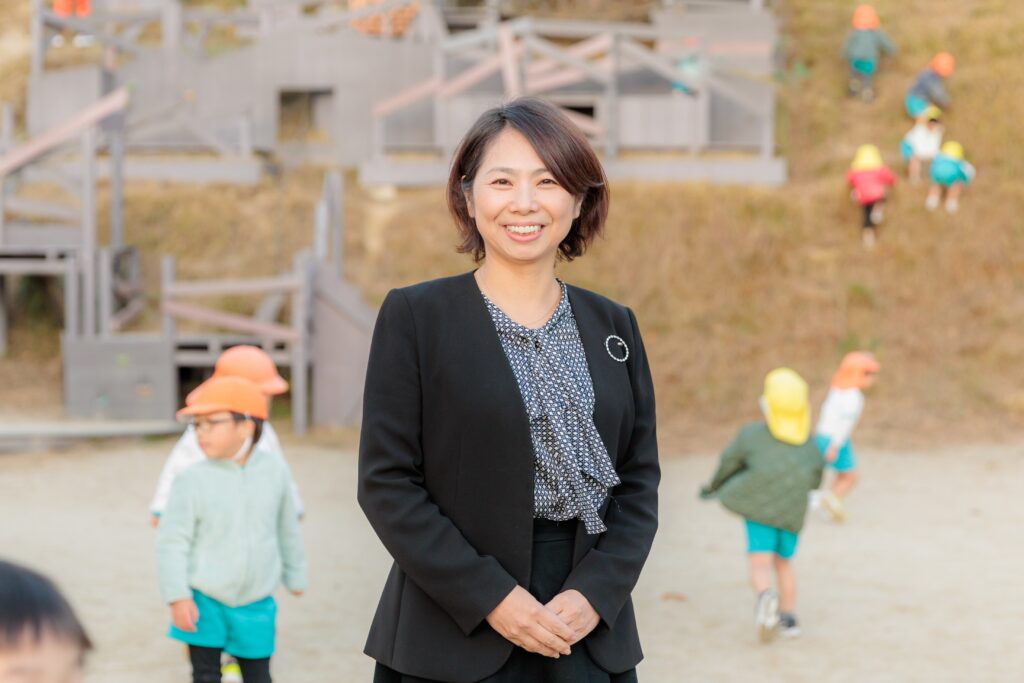
―Profile:
Chie Kunihara
In 2002, she founded the social welfare corporation “Kibo no Kai” and became its chair and principal. The following year, she opened Kodama Hoikuen Day-care Center. Since then, she has also operated the after-school care centers “Kid’s School” and “Kindai University Elementary School Kid’s School”; a public-private collaborative authorized children’s facility providing comprehensive child and child-rearing support (or nintei kodomo-en), “Ukyo Kodama Hoikuen Day-care Center”; a child development support facility that also provides day-care centers with visiting support services, “Suzaku Kodama”; and the Tenri Kodama Nintei Kodomo-en, which also has a nursery room for sick children. Serving as the chair of the Nara City Day-care Association and a Nara City certified child-rearing support advisor, she works hard to bring smiles to the faces of all people, with a focus on children, mainly in Nara City and Tenri City in Nara Prefecture.
Crying for a child-centered day-care center—The story of Kodama Hoikuen Day-care Center, which began with a request from Kunihara’s family
―Please tell us the background to the opening of Kodama Hoikuen Day-care Center, which was founded with the hope that the energetic and cheerful voices of children would echo throughout the facility.
Kunihara: Twenty years ago, when the corporation was established, the day-care shortage with children on waiting lists was becoming a serious issue nationwide. My father asked me to do something to help these children in memory of my late brother (who passed away at the age of three), which led to the opening of the day-care center. The name “Kodama Hoikuen” was chosen by my mother with the hope that the facility would be filled with the echoes (kodama in Japanese) of children’s lively voices. Kodama Hoikuen is located in Ayameike, where there used to be an amusement park and the lively voices of children could often be heard. I resolved to make the day-care center an exciting place for children, like an amusement park.
―You opened Kodama Hoikuen in 2003 and gave birth in the same year. Despite your busy schedule both at work and at home, what motivated you to continue running the day-care center?
Kunihara: The year 2003, which marked the opening of Kodama Hoikuen, a facility that is like a child to me, and also with the birth of my child the next month, was an unforgettable year for me. At that time, I wanted to return to work as soon as possible, so I left my son at my own day-care center while I worked. Even in such a situation, I approached day care with the intention of raising children as if they were my own. I think my driving force was my desire to seriously take on something that I really wanted to do. In fact, no matter how busy I am, I never feel like it’s a strain.
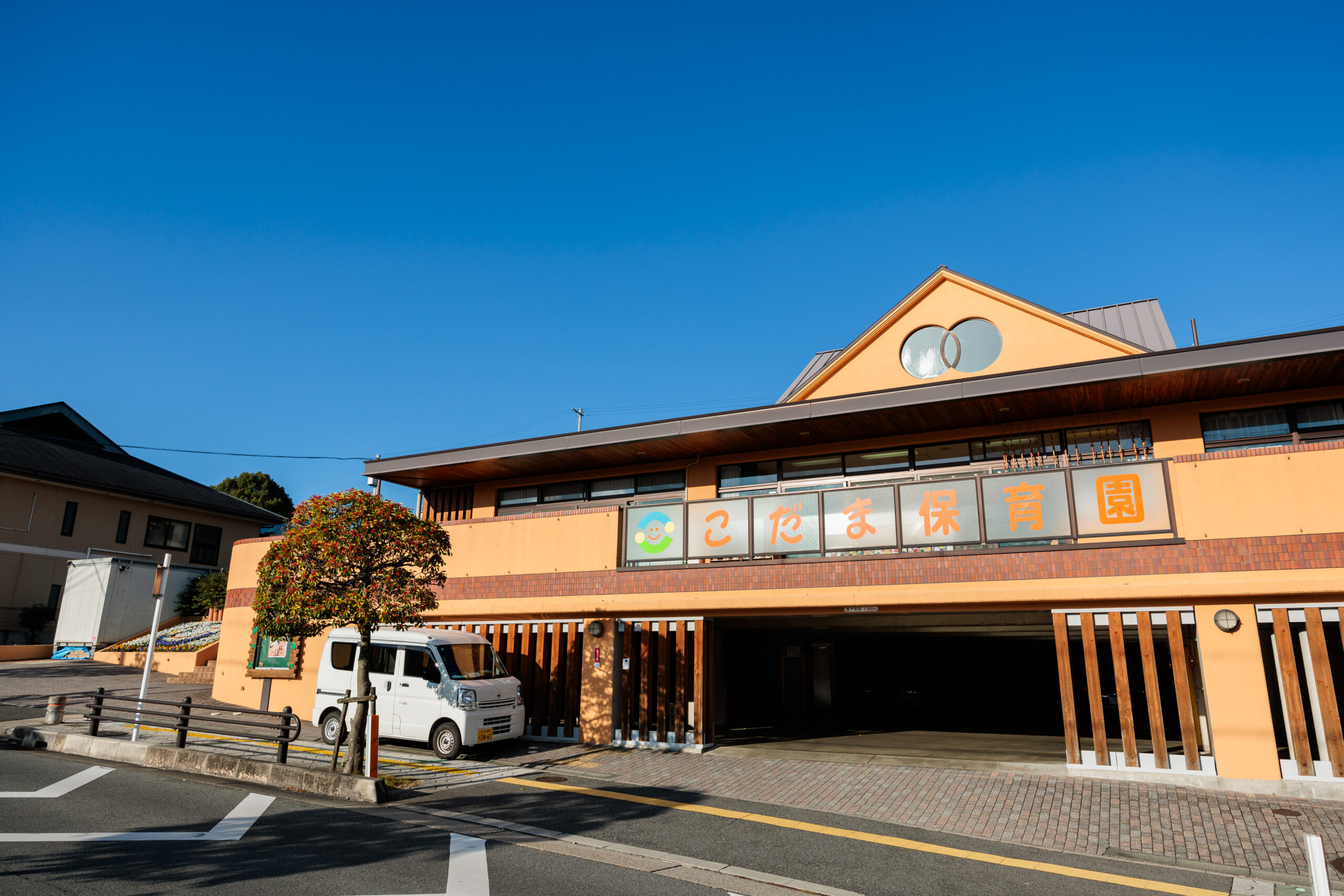
A desire to deliver local support that allows children to come first
―What is the most memorable event from the past 20 years?
Kunihara: It’s when we opened Tenri Kodama Nintei Kodomo-en, which has a nursery room for sick and recovering children, in 2023. Located on a large floor within a general hospital, the facility has a skylight that reflects the desire for children to grow up looking at the blue sky even though they are in a hospital. It also has vegetable gardens and rice paddies on the roof, making it a bright place blessed with nature. I thought that this location would allow us to provide the kind of day care our corporation was aiming for. Taking advantage of the location within the hospital, I proposed to also provide day-care services for sick and recovering children. Day-care services for sick and recovering children are now becoming common in Japan. Under these circumstances, we are distinctive in that, rather than simply setting up the facility as a mere function, we partnered with the hospital with the desire to ensure that children’s cries for help are properly conveyed to their guardians. I thought it was important for us to represent and support the situations and feelings of children, thereby creating a framework in which guardians can balance work and family life without feeling guilty. I thought we could establish a virtuous cycle model in which administrative bodies support businesses and businesses support guardians.
―It’s very important to communicate children’s situations and feelings so that their guardians don’t feel guilty.
Kunihara: I used to work while leaving my son at my own day-care center. Therefore, he may have sometimes felt lonely. However, after turning 20, he confided in me how he felt at the time: “Mom, you seemed busy, but you were always there for me when I was in trouble.” I once again felt that I want to be an adult who can put children first when it matters, no matter how busy I am. Also, I keenly realized that creating an environment where children can be made the top priority is an important role of the national, regional, and local governments, as well as companies.
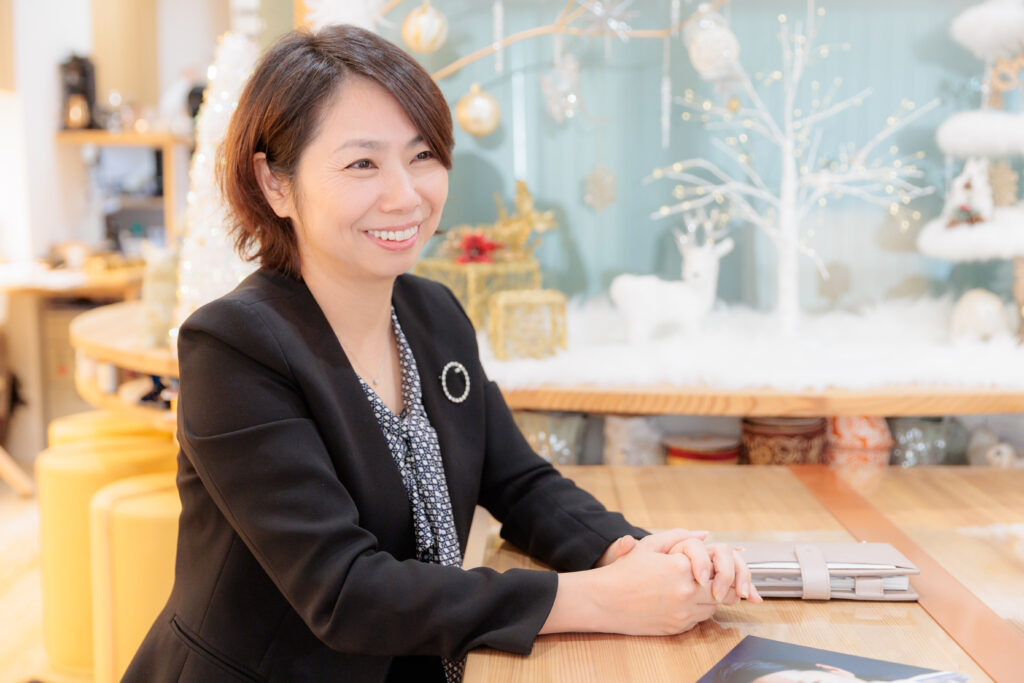
―Since you launched day-care services for sick children, have you noticed anything new or changed in your behavior?
Kunihara: I had two major realizations. First, I decided to have a nurse stationed at our day-care center to create an environment where nursery teachers could feel at ease while caring for children. For example, if a child experiences a febrile convulsion, the nurse will be there to respond appropriately. In this way, knowing that there is a staff member on hand with expertise if something does happen greatly reduces anxiety. This also directly translates into peace of mind for guardians.
Second, I have established a new child development support facility. To receive developmental support, a child must be diagnosed with a developmental disorder. To receive a diagnosis, however, it can take as long as six months to a year. Furthermore, cases in which it is unclear whether a child can be diagnosed with a developmental disorder have been increasing in recent years. Accordingly, it takes a long time before such children can receive medical treatment and education. I wanted to do something about this situation. I thought that if we noticed and addressed their developmental disorders early, there would be many children who could manage to catch up somehow by the time they reached elementary school. That’s why I decided to start a developmental support project. It is said that in order to promote a child’s development, it is very important for them to grasp the sense of balance, touch, and other senses. Because the facility uses special equipment such as ball pools and balance beams that at first glance appear to be playthings, I opened the development support facility adjacent to the day-care center. In preparation for the opening, an employee of our corporation obtained the qualification of Child Development Support Manager, which is necessary for running a development support facility. “Let’s do something new!” When such a situation arises, I think it’s easier for staff members to take on new challenges if we have a framework in place where everyone can provide support when something happens, rather than leaving it up to one person.
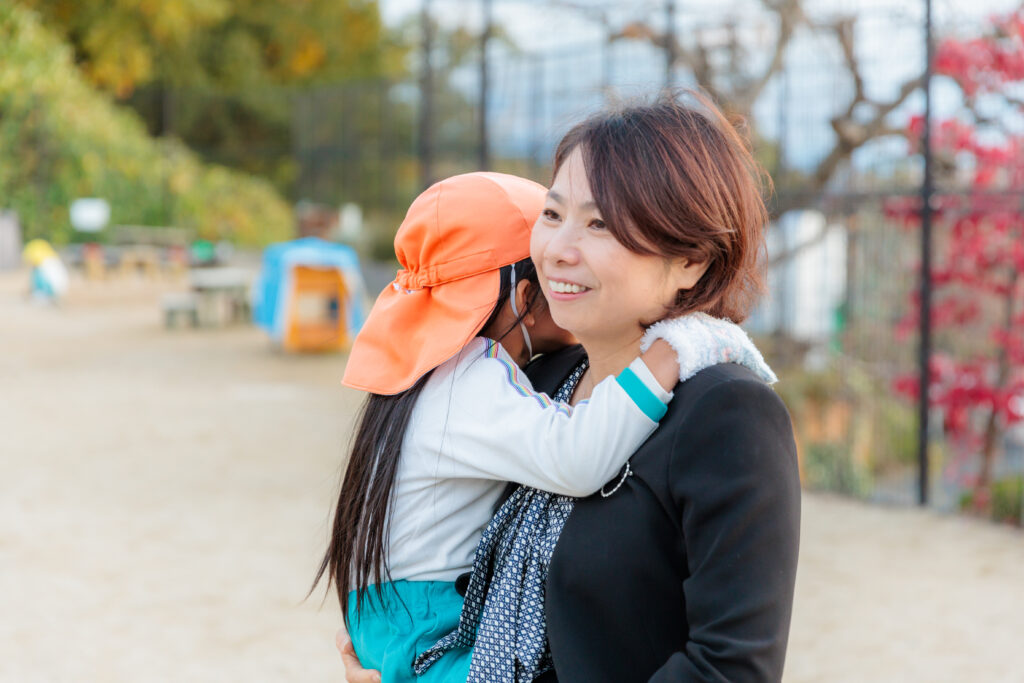
Kodama Hoikuen’s unique culture, where staff members are eager to take on new challenges
—I felt that your day-care center has a unique culture, such as everyone working together to support the launch of the facility. Please tell us about the work environment for the nursery teachers.
Kunihara: A characteristic of my day-care center is that all the staff members are always willing to give their opinions on what they want to do. The other day, they made use of a vacant space within the day-care center to create a vegetable garden in response to the children’s requests. I am always amazed by their initiative and power in taking action. For example, they renovated the staff lounge themselves.
You may have the image that a day-care center is led by a principal, but at our facility it’s the opposite. I am proud to say that we have an environment where the on-site staff can do what they want to do, and where I, as the principal, can safely entrust my aspirations to the staff. Furthermore, we also receive support from the guardians. When I was thinking about focusing on developmental support, I told a guardian who is a speech-language-hearing therapist that I wanted to do something child-focused, for children. The guardian agreed with my idea and now works as a speech-language-hearing therapist at our day-care center. I believe that the children’s smiles come from the fact that I am taking on challenges in a positive manner together with the staff members, guardians, and everyone who comes into contact with the children.
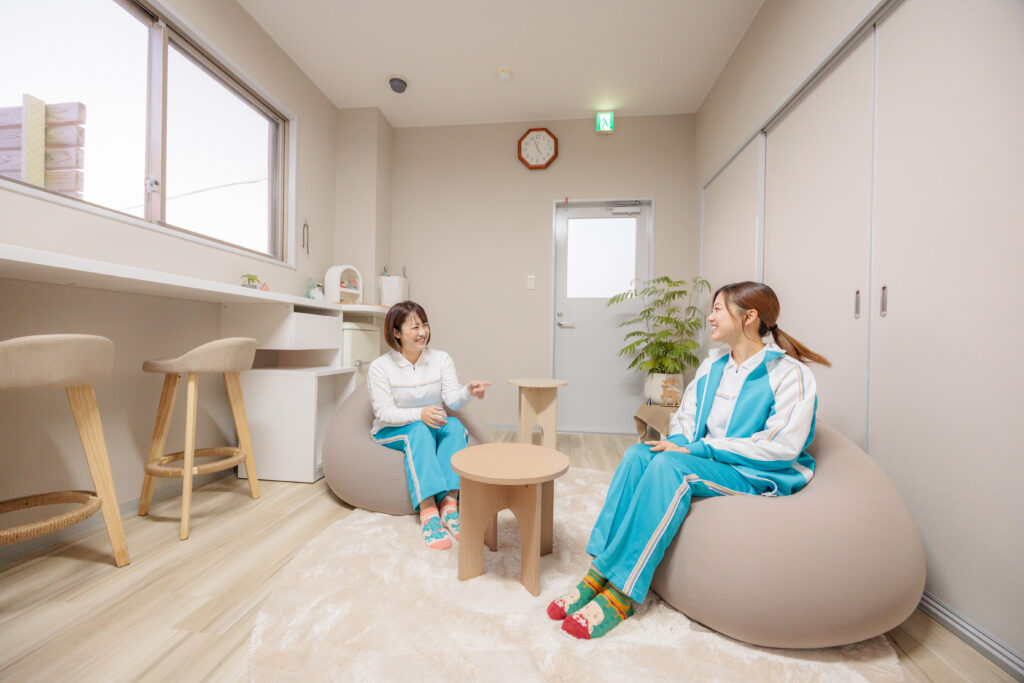
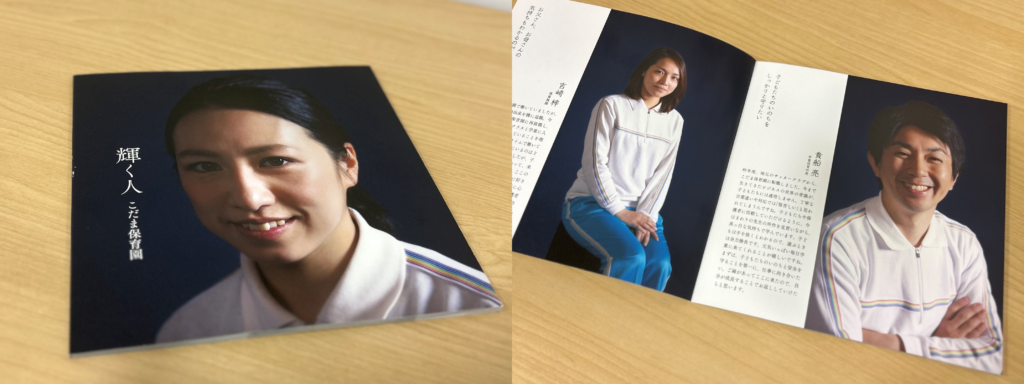
Ms. Kunihara’s Management: Watching over and taking responsibility
―I felt that there was transparency in the workplace, with various suggestions coming from the staff. Is there anything that you yourself are conscious of?
Kunihara: Rather than focusing on my role as the chair and principal of the day-care center, I keep in mind to interact with the staff as if I were their older sister. During staff meetings, I don’t take the lead. However, if there is something that concerns me or could be improved on, I make a suggestion, something like, “Perhaps it would be better to do it this way.” I think the key to employee-led communication is that the employer makes a comment only when absolutely necessary.
―What do you focus on when instructing your staff?
Kunihara: I put prime importance on valuing lives and not hurting people. In particular, I always value the idea that people can help develop others. Therefore, I provide thorough guidance to my staff to think about things from the other person’s perspective rather than from their own. Basically, I trust the staff members who I have worked with seriously. However, when, for example, a guardian contacts me about a question that arose during a conversation between the guardian and their child, I place importance on objectivity while taking into account the voices of the child and the guardian, information from staff, and even information from security cameras. Since all responsibility lies with me, as a manager, I always make it a point to praise and encourage my staff’s successes and cover for any shortcomings.
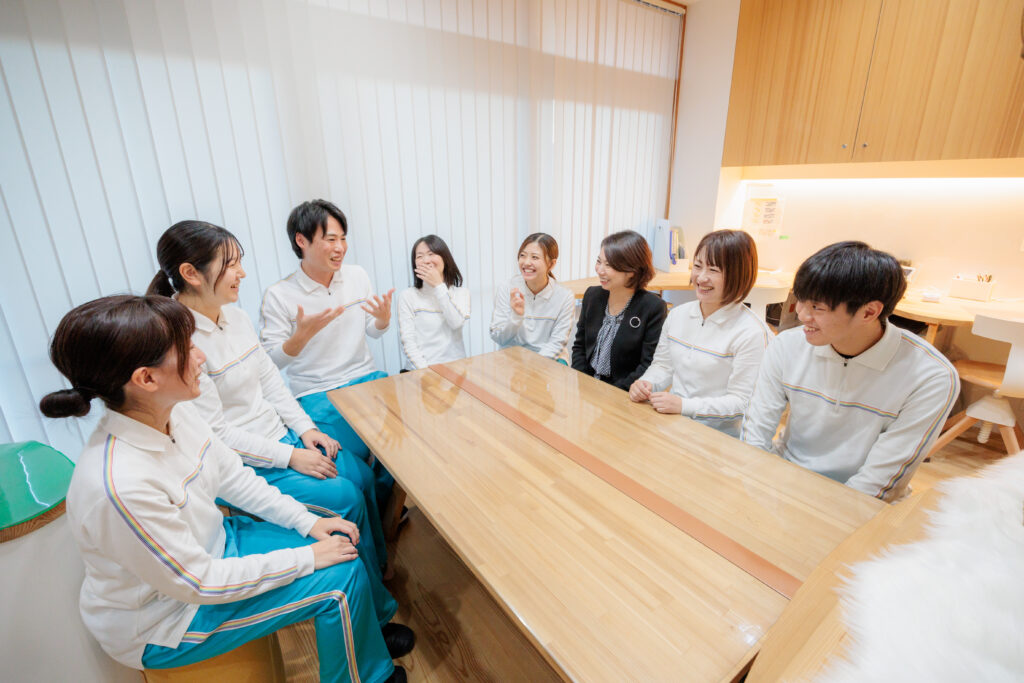
Moving on to a new phase, spreading her aspirations even further
―You are responsible for creating a day-care center where the children, staff, and guardians can all smile. Please tell us about your dreams for the future.
Kunihara: Thanks to my staff, I have been able to achieve what I wanted to do. I am truly grateful. My long-held dream of having a graduate return as a staff member has come true. So, it would be great if our graduates’ children could become members of staff next, and then the spirit of Kodama Hoikuen Day-care Center would be passed on to future generations. From now on, I would like to pass the baton to the next leader who will carry on my aspirations, support that person, and further cooperate with the local community and government. In the future, I would like to help children all over Nara Prefecture become happy, and continue my activities to spread my thoughts and aspirations.
Twenty years of endeavor to make a positive impact on children’s development

―Profile
Maki Nishino
Joined Kodama Hoikuen Day-care Center as a new graduate. Even after getting married and raising her own children, she decided to be on side for many children.
―Please tell us how you came across Kodama Hoikuen Day-care Center.
Nishino: I’ve always loved children, and my older sister was a nursery teacher. So, I wanted to become a nursery teacher. When I first visited Kodama Hoikuen, which my mother recommended, I was impressed with its environment rich in nature where children could relax and unwind, as well as with the friendly teachers. I made an immediate decision: “I definitely want to work here!”
―You started working at Kodama Hoikuen right after graduating and have been working there for 20 years now. Please tell us why you have been able to work so hard up to this point.
Nishino: As I am currently working while raising my children, I have come to realize once again the importance of being there for their development during their childhood. The people we meet, the things we are exposed to, and the feelings we have as children influence us when we become adults. Accordingly, I work with the hope that children will have as many positive experiences as possible. I feel especially rewarded when I am able to help children who are feeling anxious or tense to have a positive attitude.
―Have you had any experiences where you felt like you could actually change a child’s feelings?
Nishino: During recital practice, when a child was feeling down because he wasn’t doing well, I kept encouraging him every day, saying, “That point was really good!” and “You’ll be fine the way you are now.” In the meantime, every time we had practice, he would spot me and ask with a smile, “How did I do this time?” I was touched by his positive attitude and determination. Seeing the smiles of children makes me feel positive and encourages me to do my best to make them happy. This gives me strength, and I try not to forget that children are supporting me.
Being even more curious than children is what is required in new day care
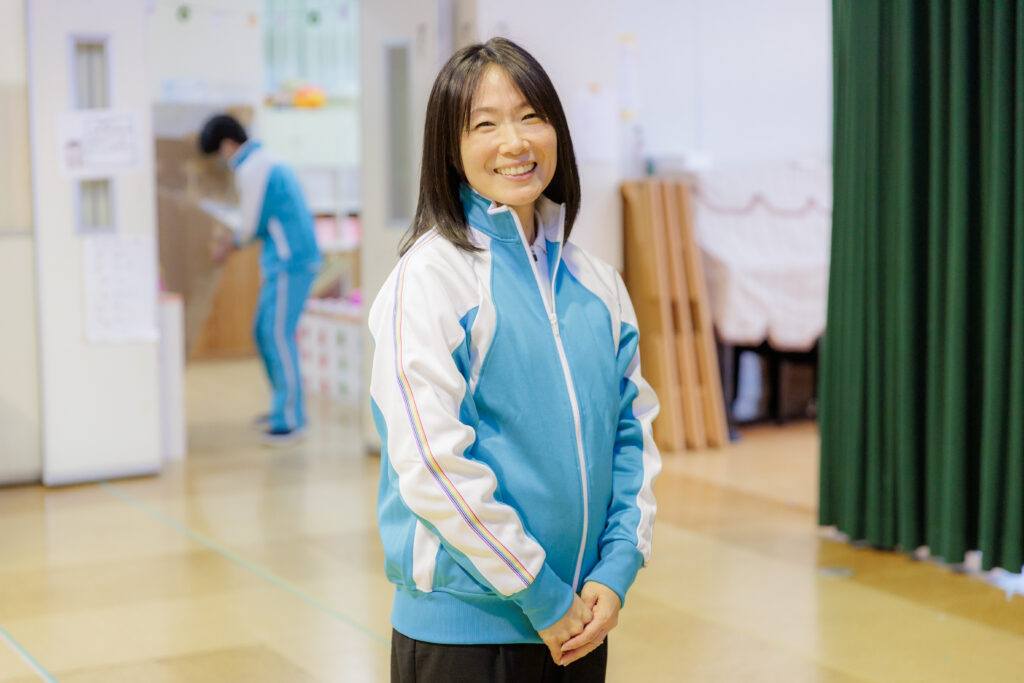
―Profile
Hiroko Kajitani
She joined the corporation as an on-site nursery teacher, and is currently in charge of educating nursery teachers, supporting the foundation of Kodama Hoikuen Day-care Center.
―What do you think is particularly important when educating on-site nursery teachers?
Kajitani: Children’s values and behavior change greatly with the times. In light of this, for the purpose of encouraging the teachers to have a flexible mindset, I tell them to be always careful not to impose customs on children that were commonplace in our own childhood. For example, compared to now, with the widespread use of smartphones, many children were not used to having their picture taken in the past. However, now that we can instantly see the images we take, things have changed to the point where we even discuss with children how they should look in the photos and which angle to take the photos from. As new cultures continue to emerge as times change, I think it’s important to keep an eye on emerging changes.
―To try something new, what do you think is the best to start with?
Kajitani: I think it is better to start with repeating “why” together with children. For example, “Why do ants move in lines?” Children keep asking “why?” about everyday scenes. I believe that if we as adults do not forget the curiosity and innocence of children and take an interest in even the smallest things they say and do, we can discover factors that may affect children’s development early on. All of our staff are inquisitive and not afraid to take on new challenges. This is thanks to the guardians who let us know about even subtle changes, the presence of the principal who reassures us with her gutsy “Failure? Bring it on!” attitude, and the work environment that allows us to give our all.

